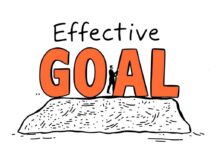The difference between knowing and doing — and how to bridge the gap

Begin by transforming insights into practice. Experience is the bridge; apply what you learn daily. Courage to implement ideas differentiates leaders from followers. It’s not just about understanding concepts, but turning them into tangible outcomes.
Focus on real-world applications. Identify specific scenarios where your knowledge can influence decisions or processes. Analyze past experiences–what worked and what didn’t? Learning from these moments fuels growth and innovation.
Encourage a culture of experimentation within your team. Facilitate discussions that challenge conventional thinking and inspire action. Emphasize that every attempt, regardless of success, contributes to collective wisdom and paves the way for future breakthroughs.
Remember, learning is a continuous cycle. The courage to act upon insights creates momentum. As you make decisions rooted in experience, remain open to adapting strategies as new information arises.
Identifying Knowledge Gaps
Conduct a systematic analysis of current practices within your field. Engage with team members to gather insights on their experiences, noting areas where they feel unprepared or uncertain. This act of courage in addressing discomfort can reveal critical deficiencies.
Utilize surveys and interviews to pinpoint specific skills or concepts lacking among your peers. Focus on both quantitative data and qualitative feedback to form a comprehensive view of educational needs.
Implement a structured framework for reflection post-project. Encourage teams to assess what was learned versus what remained unclear. Document these observations consistently to track patterns over time.
Create opportunities for collaborative learning sessions where individuals can discuss challenges faced during practical application. This peer-to-peer exchange fosters an environment conducive to recognizing blind spots.
Analyze performance metrics critically; discrepancies between expectations and results often highlight knowledge shortcomings. Pair this data with anecdotal evidence from frontline experience to craft targeted training initiatives.
Encourage leaders to model vulnerability by sharing their own gaps in understanding, promoting an open dialogue that dismantles barriers. This transparency cultivates a culture where seeking help is viewed as a strength, not a weakness.
Actively pursue ongoing education through workshops or online courses tailored to address identified deficiencies. Ensure that the application of new insights is integrated into everyday workflows for maximum impact.
Document successes derived from overcoming knowledge deficits, reinforcing the value of continuous improvement and encouraging others to take similar action toward personal development.
Translating Insights into Steps
Transform insights into actionable steps by prioritizing courage over fear of failure. Begin with small, calculated risks that allow for experimentation and learning. Document each experience meticulously to identify what works effectively and what doesn’t.
Establish a clear framework for applying knowledge. Break down large concepts into manageable tasks. For example, if financial analysis suggests diversifying investments, create a checklist detailing potential assets, their risks, and expected returns.
Create an environment that encourages proactive behavior. Host regular brainstorming sessions where team members can share observations and propose solutions. Encourage questions; challenge assumptions to cultivate innovative thinking.
Utilize tools like project management software to track progress on initiatives derived from insights. Set measurable objectives tied to those actions to evaluate success over time.
Foster collaboration among individuals with diverse experiences. This cross-pollination can lead to unexpected yet effective applications of knowledge in practice.
Regularly review outcomes against initial expectations. Adjust strategies based on feedback from real-world results, ensuring continuous improvement in decision-making processes.
Creating Actionable Frameworks
Establish clear objectives to guide practical implementation. Use SMART criteria–Specific, Measurable, Achievable, Relevant, Time-bound–for defining goals that translate insights into tangible tasks.
Incorporate a feedback loop within your framework. Regularly assess outcomes against set objectives and adjust strategies based on real-world performance. This iterative approach enhances learning from experience.
Leverage technology for seamless application of knowledge. Utilize project management tools to track progress and facilitate collaboration among team members. Visualize data through dashboards to monitor key performance indicators effectively.
Create structured templates for common tasks. This standardization aids in reducing ambiguity, ensuring everyone understands their role and responsibilities in executing strategies derived from insights.
Encourage continuous professional development. Offer workshops or online courses that align with the actionable frameworks established. This investment promotes ongoing learning and enhances team capabilities in practical applications of insights.
Cultivate a culture of accountability where each individual is responsible for their contributions toward collective goals. Recognizing achievements boosts morale and reinforces commitment to action-oriented outcomes.
This structured approach facilitates the transformation of theoretical understanding into impactful practices, driving sustained success through calculated actions rooted in solid experience.
Measuring Implementation Success
Establish clear metrics to evaluate outcomes. Define specific, quantifiable goals that reflect the desired impact of your initiatives. For instance, if focusing on a new application, track user engagement rates and feedback to assess real-world usage and satisfaction.
Incorporate qualitative insights through surveys and interviews. Directly ask participants about their experiences and challenges during implementation. This learning can reveal unforeseen barriers or opportunities for improvement.
Utilize a feedback loop mechanism. Regularly collect data, analyze results, and adjust strategies accordingly. This iterative process cultivates an environment where courage is encouraged; teams feel empowered to experiment without fear of failure.
Benchmark against industry standards or similar projects. Comparing your achievements with others can provide context for success and identify areas needing attention. Leverage these comparisons to inspire innovation and drive continuous improvement.
Create visual dashboards that display progress in real time. Visual representations of data can enhance understanding across teams, ensuring everyone stays aligned with objectives while fostering a culture of accountability.
Engage stakeholders throughout the evaluation process. Their involvement not only provides diverse perspectives but also reinforces commitment to shared goals. Collaborative discussions around outcomes can lead to actionable insights that propel future initiatives forward.
Fostering Continuous Learning
Integrate structured feedback loops into your processes. Regularly solicit input from team members on their experiences, allowing for real-time adjustments and improvements.
- Conduct weekly reflection sessions to discuss what worked and what didn’t.
- Establish a mentorship program where experienced individuals guide others through practical applications of new knowledge.
Encourage experimentation by allocating dedicated time for team members to explore innovative ideas without the pressure of immediate outcomes. This promotes a culture of curiosity and proactive learning.
- Designate 10% of work hours for innovation projects.
- Celebrate both successes and failures to create an open environment for risk-taking.
Utilize technology platforms that support collaborative learning. Implement tools that allow sharing insights across teams, fostering a communal approach to skill enhancement.
- Create online repositories for shared resources and best practices.
- Host virtual workshops led by internal or external experts focusing on practical applications of newly acquired information.
Measure engagement with learning initiatives through analytics, tracking participation rates and application in real-world scenarios. Use this data to refine offerings continuously, ensuring relevance and alignment with goals.







